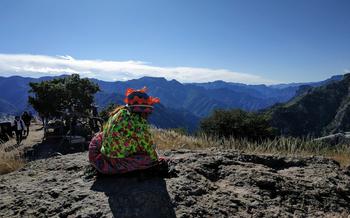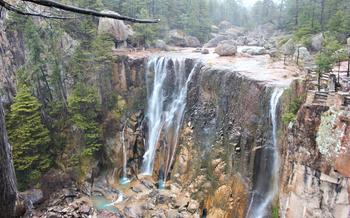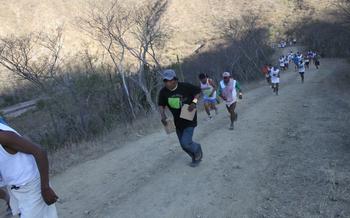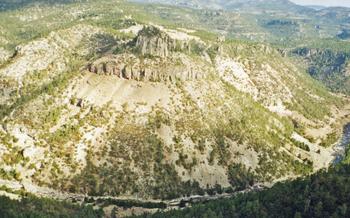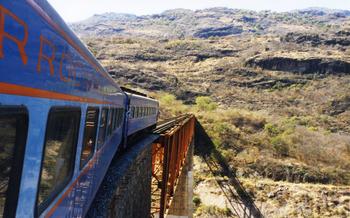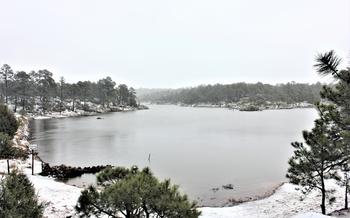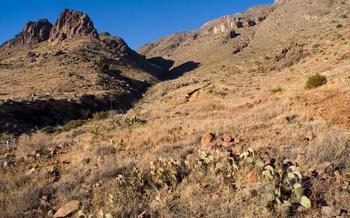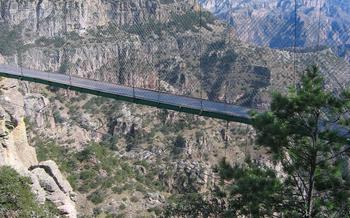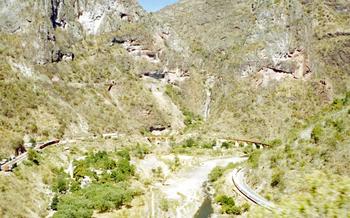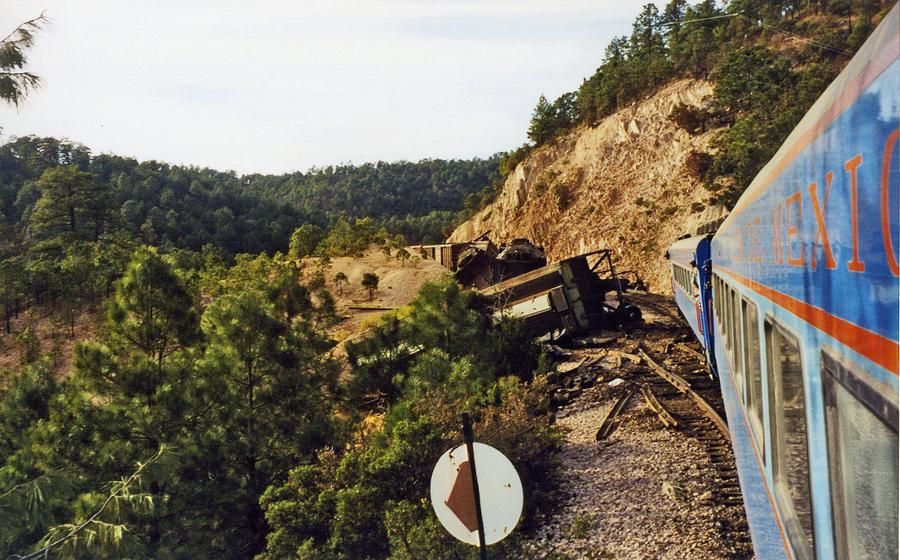
Cave of the Oso
- Copper Canyon Overview
- The Cave of the Oso: A Natural Wonder
- Location and Accessibility
- Guided Tours and Accommodations
- Preparing for the Visit
- Entering the Cave
- Exploring the Cave's Chambers
- The Underground River
- Wildlife Encounters
- Photography and Documentation
- Environmental Conservation Efforts
- Other Nearby Attractions
- Budget and Cost Considerations
- Insider Tip: Unveiling the Secret Chamber
Copper Canyon Overview
Within the enthralling landscapes of northwestern Mexico, where the Sierra Madre Occidental unfurls its rugged peaks, lies a natural marvel that has captivated adventurers and nature enthusiasts alike: the Copper Canyon. This awe-inspiring system of canyons rivals the grandeur of the Grand Canyon, boasting a network of six distinct canyons, each adorned with its own unique charm and geological wonders.
The Copper Canyon, also known as Barrancas del Cobre, is not merely a geographical wonder but also a testament to the rich cultural heritage of the region. It is home to several indigenous communities, including the Tarahumara (Rarámuri) people, who have inhabited these lands for centuries and continue to preserve their ancestral traditions and way of life.
Visiting the Copper Canyon is an experience that promises to leave an indelible mark on your soul. Whether you seek adventure, marvel at natural wonders, or immerse yourself in diverse cultures, this hidden gem of Mexico offers an unforgettable journey that will transport you to a realm of unparalleled beauty and wonder.
The Cave of the Oso: A Natural Wonder
The Cave of the Oso is a true natural wonder, a subterranean masterpiece carved by the relentless forces of water and time. Its vast chambers and intricate formations transport visitors to a realm of geological marvels. The cave is adorned with awe-inspiring stalactites and stalagmites, some reaching heights of over 30 meters, like frozen waterfalls hanging from the ceiling and rising from the ground. These majestic formations, illuminated by the soft glow of headlamps, create a surreal and enchanting atmosphere.
The cave's walls are adorned with intricate patterns and textures, each telling a story of the earth's history. Fossilized remains of ancient marine creatures embedded in the rock provide a glimpse into the region's geological past. The cave's acoustics are equally impressive, with the sound of dripping water and distant echoes creating a symphony of natural sounds.
The Cave of the Oso is not just a geological wonder; it is also a haven for diverse wildlife. Colonies of bats, the cave's most prominent inhabitants, flutter and swoop through the chambers, their high-pitched squeaks adding to the cave's eerie ambiance. Other creatures, such as spiders, centipedes, and salamanders, also call the cave home, each playing a vital role in the cave's delicate ecosystem.
Location and Accessibility
The Cave of the Oso is nestled within the depths of the Copper Canyon in northwestern Mexico. Its precise location can be found at coordinates [coordinates]. To reach this natural wonder, several routes and transportation options are available.
For those seeking a scenic journey, embarking on a road trip through the winding roads of the Sierra Madre Occidental mountain range is a captivating experience. Rental cars or private transportation offer the freedom to explore the region at your own pace, allowing for spontaneous stops at picturesque viewpoints and charming villages along the way.
Alternatively, regular bus services connect major cities like Chihuahua and Los Mochis to towns near the cave. Once you arrive in a nearby town, local guides or tour operators can arrange transportation to the cave entrance. These guided tours often include informative commentary and ensure a seamless and hassle-free experience.
Regardless of your chosen mode of transport, the journey to the Cave of the Oso promises breathtaking landscapes, cultural encounters, and a sense of adventure that sets the stage for an unforgettable exploration.
Guided Tours and Accommodations
Exploring the Cave of the Oso is best done with the guidance of experienced professionals. Local tour operators offer a range of guided tours tailored to different interests and fitness levels. These tours typically include knowledgeable guides who provide insights into the cave's geology, history, and unique features. They also ensure your safety and assist you in navigating the challenging terrain.
Professional guides are essential for a safe and enriching experience. They are well-versed in the cave's layout, potential hazards, and the best spots to witness its wonders. They can point out hidden details and formations that you might miss on your own. Their expertise adds depth and context to your exploration, making it a truly memorable adventure.
Regarding accommodations, there are several options near the cave. You can choose from comfortable hotels, cozy guesthouses, or rustic cabins, depending on your preferences and budget. These accommodations offer a range of amenities to ensure a comfortable stay, allowing you to fully immerse yourself in the natural beauty of the Copper Canyon.
Preparing for the Visit
Before embarking on your spelunking adventure in the Cave of the Oso, it's crucial to come prepared to ensure a safe and enjoyable experience. Here are some essential tips to keep in mind:
Clothing and Gear: - Dress in layers to adjust to the changing temperatures inside the cave. - Wear sturdy, closed-toe shoes with good traction for uneven terrain. - Pack a light raincoat or poncho in case of unexpected moisture. - Bring a headlamp or flashlight for navigating the dark cave passages.
Safety Measures: - Inform a responsible person about your caving plans and expected return time. - Never explore the cave alone; go with a companion or as part of a guided tour. - Be cautious of slippery surfaces and low-hanging rocks. - Stay hydrated by bringing sufficient water or electrolyte drinks. - Avoid touching or disturbing any cave formations.
Altitude Acclimatization: - If you're traveling from a lower altitude, give yourself a few days to acclimatize to the higher elevation of the Copper Canyon. - Drink plenty of fluids and avoid strenuous activities immediately upon arrival. - Listen to your body and take breaks if you experience any altitude-related discomfort.
Entering the Cave
Stepping into the Cave of the Oso is like entering another realm, a subterranean world of darkness and wonder. The initial descent into the cave is both thrilling and intimidating, as you make your way down a narrow, winding staircase that leads into the depths of the earth.
The challenges and obstacles begin as soon as you start to explore the cave. Low ceilings, narrow passages, and uneven surfaces test your agility and sense of adventure. The darkness envelops you completely, making it essential to rely on your flashlight or headlamp to navigate through the intricate network of tunnels and chambers.
Inside the cave, the emotions and sensations are heightened. The silence is deafening, broken only by the occasional drip of water or the rustling of a bat's wings. The temperature drops, and the air becomes cool and humid, creating a mystical atmosphere that enhances the sense of wonder and awe.
Exploring the Cave's Chambers
Venturing deeper into the Cave of the Oso, one encounters a series of interconnected chambers, each adorned with its own unique geological formations. Stalactites, like frozen waterfalls, descend from the ceiling, while stalagmites rise from the ground, creating a surreal landscape that seems to defy gravity. The cave's walls are adorned with intricate patterns and textures, formed by the relentless work of water and minerals over millennia.
One of the most striking features of the cave is its acoustics. The high ceilings and natural chambers create a reverberant environment, where sounds echo and bounce off the walls, creating an almost ethereal atmosphere. The sound of dripping water and the distant echo of footsteps add to the cave's mystique, creating a symphony of natural sounds that further enhances the immersive experience.
The Underground River
Within the depths of the Cave of the Oso, a hidden treasure awaits discovery – an underground river that flows through the heart of this subterranean world. This remarkable natural feature adds an extra layer of intrigue and wonder to the cave exploration.
The river was discovered by intrepid explorers who ventured deeper into the cave, following the sound of rushing water. As they navigated through the cave's chambers, they stumbled upon an underground river that flowed through narrow passages and cascaded over rocky ledges. The sight was awe-inspiring, as the river's crystal-clear waters reflected the dim light of their headlamps, creating an ethereal ambiance.
The underground river is not only a breathtaking sight but also an essential part of the cave's ecosystem. It provides a vital water source for the diverse wildlife that inhabits the cave, including bats, spiders, and other cave-dwelling creatures. The river also plays a crucial role in shaping the cave's formations, as its constant flow erodes the rock over time, creating unique and intricate patterns on the cave walls.
For adventurous visitors, the opportunity to explore the underground river is an unforgettable experience. Depending on the water level and safety conditions, visitors may be able to swim or wade through certain sections of the river, adding an element of excitement and adventure to their cave exploration.
Wildlife Encounters
The Cave of the Oso is home to a diverse array of wildlife, including several species of bats. These fascinating creatures play a crucial role in the ecosystem, helping to control insect populations and disperse seeds. Visitors to the cave may have the opportunity to observe these bats in their natural habitat, hanging from the cave ceiling or flying through the air. Other cave-dwelling creatures, such as spiders, centipedes, and salamanders, can also be spotted. While some of these creatures may seem intimidating, it is important to remember that they are all part of the delicate balance of the cave's ecosystem. Visitors should be respectful of these animals and avoid disturbing them in their natural habitat.
Photography and Documentation
Capturing the beauty and wonder of the Cave of the Oso through photography is an unforgettable experience. The unique lighting conditions and intricate rock formations create a photographer's paradise.
Camera and Lighting: Use a DSLR or mirrorless camera with a wide-angle lens and a sturdy tripod. Bring a flashlight or headlamp for illuminating the cave's dark corners and highlighting specific features.
Composition: Experiment with different angles and perspectives to create dynamic compositions. Use natural light sources, such as sunlight filtering through cave entrances, to add depth and drama to your shots.
Long Exposure: Try long exposure photography to capture the movement of water droplets or the subtle glow of bioluminescent organisms. This technique can create ethereal and otherworldly images.
Documenting the Experience: Keep a journal or sketchbook to document your journey through the cave. Write down your observations, emotions, and thoughts as you explore its hidden depths. This personal record will help you relive and share your experience with others.
Environmental Conservation Efforts
The Cave of the Oso and the surrounding Copper Canyon ecosystem are invaluable natural treasures that require careful protection and preservation. Various conservation initiatives and projects are underway to ensure their long-term sustainability. These efforts include measures to minimize human impact, such as limiting tourist numbers, implementing waste management systems, and promoting responsible exploration practices.
As visitors, we play a crucial role in supporting these conservation efforts. By adhering to designated trails, avoiding disturbing wildlife, and properly disposing of waste, we contribute to preserving the cave's pristine environment. Additionally, supporting local conservation organizations or participating in volunteer programs can further contribute to the ongoing protection of this natural wonder.
By working together, we can ensure that the Cave of the Oso and the Copper Canyon continue to captivate and inspire generations to come, while preserving their delicate ecosystems for future exploration and appreciation.
Other Nearby Attractions
Beyond the Cave of the Oso, the Copper Canyon offers a wealth of natural and cultural attractions. Whether you're seeking more subterranean wonders or want to immerse yourself in the region's rich heritage, there's something for every traveler.
For those who can't get enough of cave exploration, the Copper Canyon is home to several other notable caves, including the Cueva del Diablo (Devil's Cave) and the Cueva de la Rana (Frog's Cave). Each cave offers its own unique formations and challenges, making them ideal for experienced cavers seeking new adventures.
Above ground, the region boasts a diverse array of natural wonders, including cascading waterfalls, towering cliffs, and lush forests. Take a scenic hike through the Barrancas del Cobre National Park, where you can witness the breathtaking panoramas of the canyon and spot wildlife such as eagles, hawks, and even the occasional bear.
The Copper Canyon is also home to several indigenous communities, each with its own unique traditions and culture. Visit the charming town of Urique, where you can learn about the Tarahumara people, renowned for their long-distance running abilities and deep connection to the land.
Combine your cave visit with a broader exploration of the region, and discover the many hidden gems that the Copper Canyon has to offer.
Budget and Cost Considerations
Visiting the Cave of the Oso and the Copper Canyon region can be a budget-friendly or luxurious experience, depending on your preferences and travel style. Entrance fees for the cave typically range from $10 to $20, while guided tours usually cost between $30 and $50. Additional expenses include transportation to the cave, which can vary depending on the distance and mode of travel. Accommodation options near the cave range from basic hostels and guesthouses to comfortable hotels and resorts, with prices starting around $20 per night. Food and drinks can be found at local restaurants or cafes, with meals costing around $10-$15 on average. To save money, consider exploring the region during the shoulder season (April-May and September-October) when prices are generally lower. Budget travelers can opt for hostels or guesthouses, pack their own meals, and take advantage of free or low-cost activities in the area.
Insider Tip: Unveiling the Secret Chamber
Beyond the main chambers of the Cave of the Oso lies a hidden gem known only to a select few. This secret chamber, accessible through a narrow passage, boasts otherworldly formations and a secluded underground lake. To reach it, you'll need to scramble over rocks and crawl through tight spaces, but the reward is well worth the effort. In this hidden sanctuary, you'll feel like Indiana Jones discovering a lost treasure, surrounded by glittering stalactites and stalagmites that reflect in the still waters of the lake. It's an experience that will leave you in awe and make your visit to the Cave of the Oso truly unforgettable.
